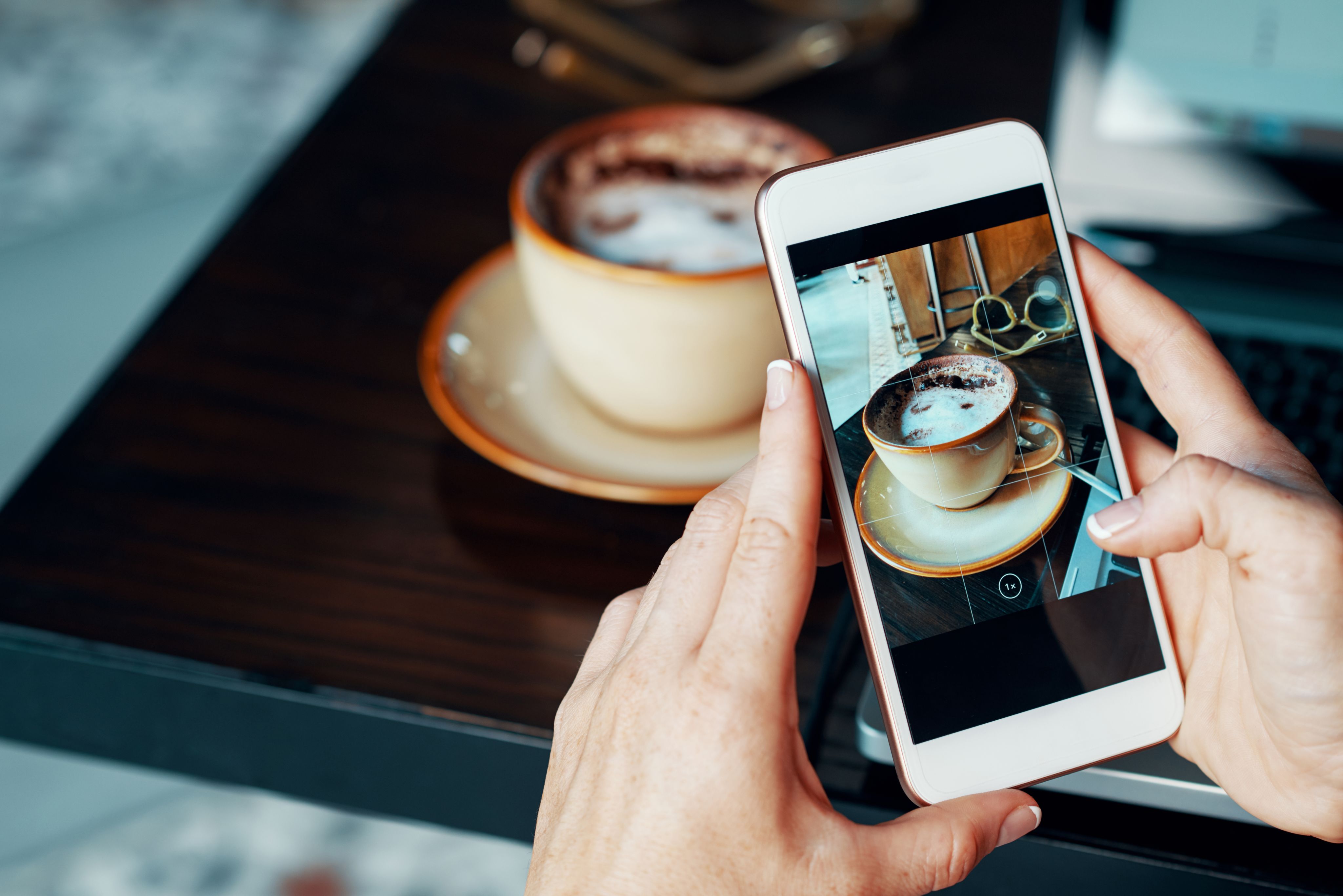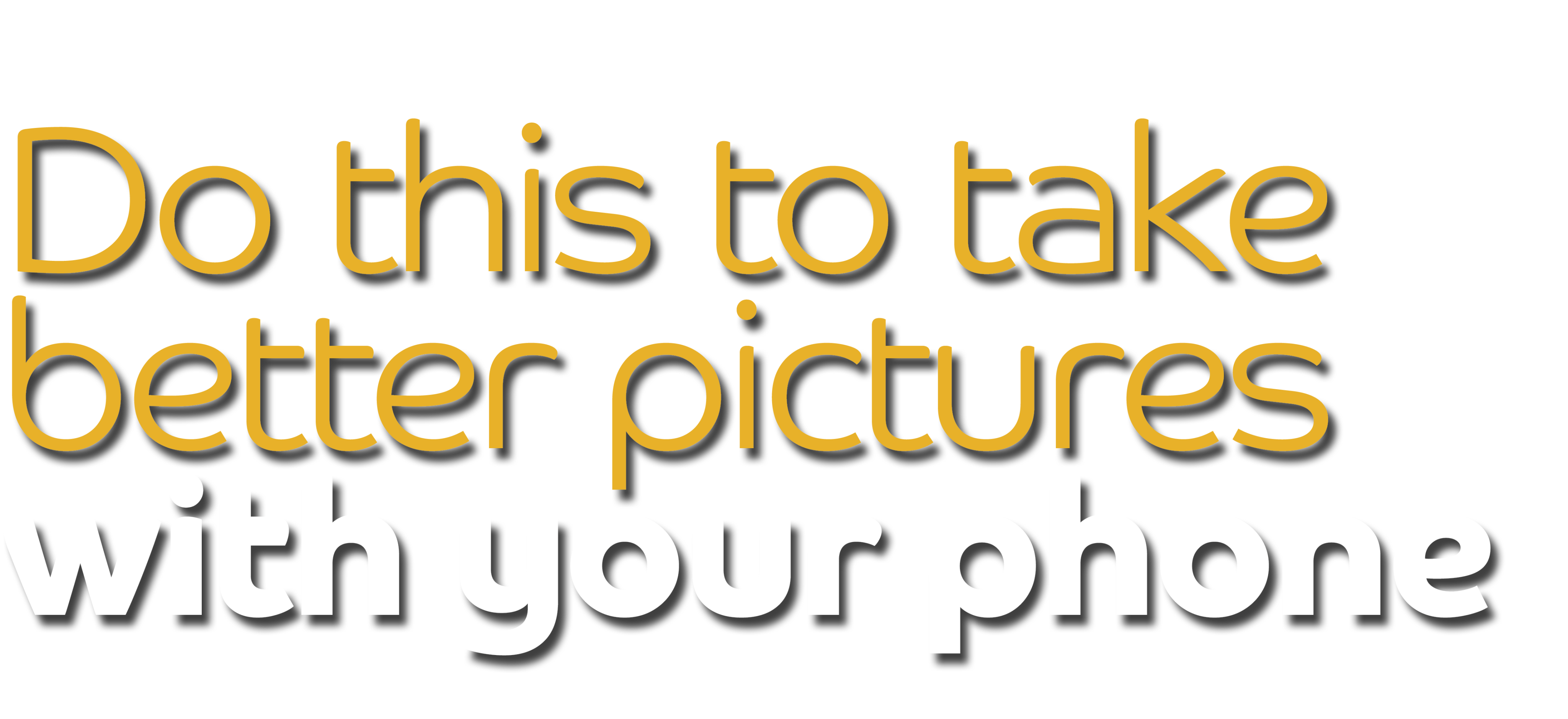We all use our smartphones for daily photographs,
but do you really know how to make the best of it?

While smartphone cameras are incredibly powerful, many people don’t take full advantage of their potential. With just a few tips and tricks, you can significantly improve the quality of your photos. Here’s how to get the best results from your phone’s camera.
1. Clean your lens
This is one of the simplest tips but often overlooked. Phone lenses easily get smudged from fingerprints, dirt, or dust. Before taking a photo, wipe the lens with a clean, soft cloth. Or if you’re trying to focus and your phone is struggling and it looks like everything in the picture is a bit foggy, it’s probably the lens. A clean lens will produce sharper images and clearer colours, ensuring your photos look more professional from the start.
2. Tap to focus and use manual exposure
Most phone cameras are equipped with auto-focus, but tapping on your subject before taking a picture ensures it’s the main focus of the image. On most phones, tapping on the screen also gives you control over exposure, allowing you to adjust the brightness by sliding up or down. This is especially useful when you’re taking pictures in tricky lighting conditions, like bright sunlight or dim indoor settings.
3. Use natural light to your advantage
Good lighting is crucial to great photography. When possible, use natural light instead of your phone’s flash, which can often result in harsh shadows or an unflattering flat look. Position your subject near windows or go outdoors for the best lighting. If you’re outside, early morning or late afternoon (known as the “golden hour”) offers soft, warm light that makes photos look beautiful.
4. Play with composition
Following simple composition rules can instantly improve your photos. One of the most effective is the “rule of thirds”. Many phone cameras offer a grid overlay option – use this to position your subject off-centre at one of the intersections of the grid lines. This creates a more visually appealing image. Also, experiment with different angles; crouch down or shoot from above to find the most interesting perspective.
5. Edit, but don’t overdo it
Phone cameras now come with built-in editing tools, and there are many third-party apps available for more advanced editing. Adjusting brightness, contrast, and saturation can enhance your photos, but be careful not to overdo it. Subtle edits will keep your photos looking natural while improving the overall look and feel. Overediting, on the other hand, is visible and can make images look tacky.
6. Get the best phone for photography
If photography is important to you, research phone cameras before you upgrade your phone. Samsung, Apple and Huawei all have amazing camera options in their phone models, but each brand comes with its own pros and cons. Once you know what you want, visit your nearest Cash Converters store. Here you’ll find a range of top-quality phones, which gives you the opportunity to upgrade for less – and make more beautiful memories.
7. For the professionals: buy a camera!
Lastly, if you’re taking photos with your phone, you have to know that there are certain limits to these cameras. If you want to experiment with high-quality portraits, large landscapes in challenging lighting (like dusk, or stargazing) and editing in raw, then a camera is the answer. Read more about it here:
Cash Converters stocks a wide range of cameras and accessories for less, so you can experiment with lenses, various-size cameras, and more. Happy snapping!


